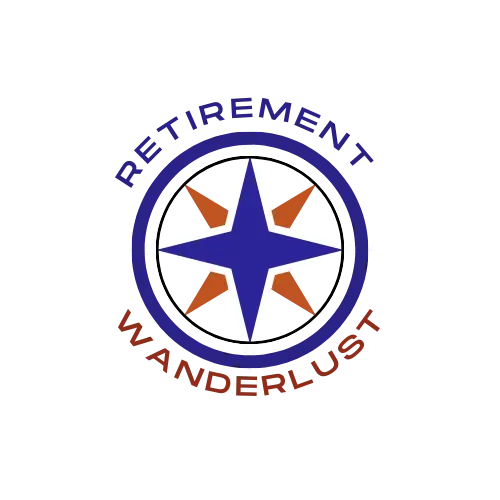My journey to a well-prepared retirement started when I realized there were “things to do before retirement” and needed a comprehensive plan. After years of working in the corporate world, I look forward to an adventurous retirement. The first step I took towards planning my retirement was making a checklist of my retirement goals. The best time to start this is right now!
Retirement planning is not just about how much you have saved; it also involves understanding your monthly expenses and excess spending and how to manage these. It also involves making sure you’re covered when it comes to health insurance. It’s worth looking into the health insurance marketplace before Medicare kicks in. Don’t forget to consider life insurance policies as part of your plan.
Table of Contents
Analyzing Your Existing Financial Circumstances
To retire comfortably and confidently, I realized the importance of understanding my current financial situation. This meant considering my income and expenses, the amount of money I had coming in each month, and the money I had going out each month. I also had to consider my savings rate – how much I was willing and able to save each month.
One thing I had to remember was to consider all sources of income and assets. Do I have a company pension? What’s its value? Do I have savings in a 401(k) or IRA? How much are they worth? By taking this step now, I’ve been able to make adjustments as needed over time and feel more secure about my future.
Take Stock of Your Assets and Liabilities
Before I started planning for retirement, it was essential to know what I had to work with. I took stock of my assets and liabilities to get a clear picture of my financial situation. This helped me determine how much income I’ll need to cover my expenses and live the lifestyle I want in retirement. It also gave me a better idea of when I could retire and how much retirement savings I’ll need.
Something that might surprise you is that even if you retire at 62 with $300k, it might not be enough, depending on your lifestyle and expenses. That’s why it’s so important to take stock of your assets and liabilities now so you can plan and make any necessary changes.

Calculate Your Expected Expenses Upon Retirement
One of the things to do before retirement is to calculate the expenses you’ll have once you retire. These expenses include things like housing, food, transportation, and healthcare. Costs will be different than they are now, so it’s important to estimate these future expenses realistically.
I used the 50-30-20 rule for budgeting. This rule suggests spending 50% of your income on essential expenses, 30% on non-essential expenses, and 20% on savings and debt repayment. Using this rule, I’ve gotten a clear idea of my expected expenses upon retirement and adjusted my budget accordingly.
Know Where You Stand Financially
As I inch closer to retirement, I realize the importance of understanding my current financial situation. I started by taking a detailed account of my monthly income and expenses. This helped me understand my cash flow – how much money I have coming in and going out each month. It’s a simple step, but it gives me a clear picture of my finances.
Next, I looked at my assets and liabilities. I checked the value of my company pension and savings in my 401(k) and IRA. I also considered other assets that might increase in value in the future. A chat with a certified financial planner highlighted aspects I had not considered. Now, equipped with this knowledge, I am more confident in making necessary adjustments over time.
Evaluate If You Need to Boost Your Savings
After understanding my financial status, I evaluated my savings. While I had been diligent about saving, I wanted to ensure that what I had would be enough to sustain my lifestyle in retirement. I considered my current savings rate and projected expenses after retirement. This was a critical step because it helped me identify any gaps and create a plan to cover them.
One thing that became apparent was the need to boost my savings. I realized that even small increases in my savings could significantly impact my future earned income. I am now making conscious efforts to put aside a little more each month towards my retirement fund.
Strategies to Maximize Your Retirement Savings
I am keen on maximizing my retirement savings. I have learned that retirement doesn’t mean I should stop saving. As long as I have earned income, I can continue contributing to my traditional and Roth IRAs. This is a strategy I have found to be very effective.
However, it’s not just about saving; it’s also about saving smart. I will consult my financial advisors to determine the best time to start withdrawing from my retirement savings accounts. This way, I can make the most of my savings for retirement while still enjoying a comfortable lifestyle.
Understand the Importance of an Emergency Fund
Along my journey toward retirement, I’ve realized the importance of having an emergency fund. This is a separate savings account that I can tap into for unexpected expenses. I’ve made it a point to save about 3-6 months’ living expenses in this fund. This way, if I ever face unexpected costs like medical bills or home repairs, I am covered.
I have opened an emergency fund account at a bank with low fees and a reasonable interest rate. This is a safety net everyone should have, not just those approaching retirement. The peace of mind that comes with knowing I have this fund to fall back on is priceless.
Increase Contributions to Your Retirement Accounts
In my efforts to boost my retirement savings, I’ve found it beneficial to increase contributions to my retirement accounts. Every extra dollar I put in now can grow significantly over time, thanks to compounding interest. I weigh the pros and cons of my options, compare fees and tax implications, and consider when I’ll need to withdraw money.
Increasing my contributions is a decision I didn’t take lightly. I carefully evaluated my financial situation and, with the help of my financial advisor, determined the best course of action. Now, as I see my retirement savings grow, I am reassured that I am on the right track towards a secure and comfortable retirement.
Determine How Much More You Can Contribute By The End of The Year
I’ve been thinking about how much more I can contribute to my retirement plans by the end of the year. It’s not just about meeting my retirement goals but also about maximizing my savings and ensuring a comfortable future. I’ll consider my current financial situation, my retirement goals, and any changes in my income or expenses.
It’s important to remember that every dollar I save now will have a big impact on my retirement lifestyle. So, I plan to review my budget, cut unnecessary expenses, and increase my contributions as much as possible. I know I won’t regret these decisions while enjoying my retirement.
Consider Tax-Smart Strategies for Retirement
While saving for retirement, it’s also important to consider tax-smart strategies. The amount of tax I’ll pay during retirement depends on my income and my tax bracket. So, I’ve been exploring different strategies to minimize my tax burden and maximize my retirement income.
For instance, I’ve considered contributing more to my IRA before 2024. This will not only increase my retirement savings but also reduce my taxable income. Also, I’ve been learning about how taxes work with different types of retirement plans and investments. This knowledge will help me make better decisions and ensure a tax-efficient retirement.
Develop a Plan to Clear Your Debts
Another part of my pre-retirement planning involves developing a plan to clear my debts. I know that carrying debt into retirement can strain my finances and limit my lifestyle options. So, I’ve been prioritizing paying off my debts before I retire.
It’s not always easy, but I’ve been taking steps to reduce my expenses, increase my income, and pay off my debts faster. I’ve also been trying to avoid taking on new debt, especially for non-essential items. I know that the sacrifices I make now will be worth it when I’m debt-free in retirement.

Gearing Up for Health Care Needs and Costs
Healthcare is one of the most crucial elements of a fun-filled retirement. However, I’ve been considering my healthcare needs and costs. I know that healthcare is one of the biggest expenses in retirement, and it’s essential to plan for it. Luckily, I’ve been learning about the different health coverage options available and how they can impact my household income.
While Medicare provides health coverage for many older Americans, it may not cover all my healthcare costs. So, I explored other options, such as private insurance and supplemental plans. This way, I can ensure I have the coverage I need without putting too much strain on my budget.
Plan Future Healthcare Costs
Planning for future healthcare costs is a key part of my retirement preparation. I’ve been considering my current health, potential medical expenses, and expected healthcare inflation. This helps me estimate how much I’ll need to cover my healthcare costs before retiring.
To minimize my out-of-pocket expenses, I’ve been considering different healthcare plans and strategies. For instance, I’ve been looking at high-deductible health plans with health savings accounts, which can offer tax benefits. I’ve also been focusing on staying healthy, as this can help reduce my healthcare expenses in retirement. After all, prevention is better than cure.
What are Your Coverage Options Until Medicare Kicks In?
As someone planning to retire, it’s critical to understand your health coverage options until Medicare kicks in. One of those options could be taking advantage of retiree health benefits if your previous employer offers them. This can serve as a bridge until you become eligible for Medicare. It’s also wise to consider supplemental coverage, which can help cover expenses not handled by your primary health coverage.
If you’re filing for social security before reaching the standard Medicare eligibility age of 65, you’ll be automatically enrolled in original Medicare, including Parts A and B. However, if you aren’t filing for social security, it’s important to sign up for Medicare three months before you turn 65 to avoid any late-enrollment penalties. Also, you might want to think about a Medicare Advantage plan or a drug plan to enhance your coverage. Each choice has its pros and cons, and those specifics are certainly worth exploring as you prepare for this exciting new chapter of life.
Learn the Intricacies of Medicare
As someone who’s retired or nearing retirement, it’s crucial to understand how Medicare works. This health insurance program, designed for those aged 65 and over, can be a lifeline in managing healthcare costs. It covers expenses such as hospital stays, doctor visits, prescription drugs, and preventive services.
Medicare offers not only financial assistance but also peace of mind. With it, there’s one less thing to worry about regarding healthcare. It’s reassuring to know that retirement doesn’t mean losing health insurance. I recommend visiting the official Medicare website to deepen your understanding of this essential program further.
Social Security Planning
Planning for social security is another key aspect to consider when preparing for retirement. It’s a significant source of income for many retirees, so understanding how it works is paramount. It’s also important to note that the age you’re eligible for full security benefits can vary depending on your birth year.
The system can seem complex, but with a little research, it becomes less daunting. I recommend fully understanding what you’re entitled to, how it works, and how it can contribute to your retirement plan. This information will be crucial in planning for a comfortable and stress-free retirement.
Understand Social Security Benefits
Learning about social security benefits is integral to retirement planning. These benefits, which are available once you reach a certain age, can significantly supplement your income in retirement. It’s important to consult with your human resources department or use online resources to understand the specifics of these benefits.
When preparing for retirement, it’s also essential to know when you can start collecting social security. This can depend on various factors, including your age and the year you were born. Understanding these details will help you plan more effectively for your future.
Know the Retirement Ages for Full Social Security Benefits
Knowing the ages for full security benefits is key to maximizing your retirement income. These ages vary based on your birth year. For instance, if you were born in 1955, you’d hit full retirement age at 66 and 2 months, while those born in 1960 or later would reach 67.
Understanding these age thresholds can help you plan when to retire and when to start drawing on your security benefits. This information can greatly impact your retirement planning and help ensure you’re financially prepared for this new phase of life.
Improve Your Knowledge About Social Security
When you’re retired or nearing retirement, understanding the ins and outs of Social Security can be a game-changer. It is a fixed income for your lifetime, offering much-needed financial security. But the amount you receive isn’t arbitrary – it’s based on your earnings history. The more you’ve worked and the higher your earnings, the more significant your retirement benefits will be.
Interestingly, you can start receiving social security as early as 62. But it’s worth noting that if you wait until your full retirement age (between 66 and 67), your monthly income will increase. This age is known as the full retirement age, and every year you delay taking benefits past this age, your benefits will increase. Now, isn’t that something worth knowing?
Creating a Retirement Budget
Planning for retirement isn’t just about savings; it’s also about spending wisely. A sound retirement budget is an essential tool to help manage your retirement accounts effectively. To create a comprehensive budget, you need to understand how much money is coming in and how much it will cost you to maintain your lifestyle.
Consider all your expected expenses and financial obligations. This not only includes your basic living expenses but also any financial goals you’ve set for your retirement. Remember, your budget should be flexible enough to accommodate any changes or unexpected expenses that may come up during your retirement.
Develop a “Retired” Budget
Once you’ve retired, your income is likely to change, and you need to adjust your budget accordingly. Your expected retirement expenses should include housing, food, transportation, and healthcare. But often overlooked are costs related to gifts and personal indulgences. Remember, retirement is about enjoying your golden years, so remember to budget for the little pleasures of life.
But hold on, there’s more to a retired budget than just expenses. You also need to account for unexpected costs and the ever-looming inflation. The cost of living tends to rise over time, and your retirement income should be able to keep pace with it. So, while developing your retired budget, factor in these elements.
Identify Effective Ways to Reduce Home and Utility Expenses
Let’s face it: home and utility bills make up a significant chunk of our expenses. But there are ways to curb this spending. This could be as simple as changing our spending habits, like switching off lights when not in use or using energy-efficient appliances. Every little bit helps when it comes to saving money.
Consider bigger steps, like refinancing your mortgage to lower the monthly payments. By doing so, you can save a substantial amount over time. Look at your home and utility expenses and see where you can make effective changes to reduce costs.
Plan Transportation Costs in Retirement
One of the often overlooked aspects of retirement planning is transportation costs. It’s essential to think about how you’ll get around in your retirement years. If you’re 65 and older and live in an urban area, selling your car could be a viable option. Public transit, ride-sharing, or biking can be cost-effective and eco-friendly alternatives.
Not only will this save you money on gas and maintenance, but it can also reduce your health care costs by staying active. And if you need more comprehensive coverage, consider long-term care insurance. It can help cover long-term care costs not covered by Medicare, providing a safety net for unforeseen health expenses. Remember, a good retirement plan is comprehensive and considers transportation and healthcare costs.
Planning Your Retirement Income
As a part of my retirement checklist, I’ve started considering my income during retirement. As a 57-year-old man who has worked in the corporate world, it is time to focus on my retirement planning. My wealth management strategy is to ensure a good standard of living after retirement and to make my retirement years adventurous.
One of the key points to consider is how my assets will be distributed during retirement. Estate planning is a crucial factor here. The power of attorney should be given to a trusted individual who can manage my financial affairs in case of unforeseen circumstances. It all boils down to planning effectively and securing a financially stable future.
Final Thoughts
As my retirement date draws closer, I realize that preparing for retirement has been a journey, not just a destination. The money saved over the years, the investments made, and the HSA funds set aside all play a pivotal role in the life transition ahead.
In my quest to make my retirement life adventurous, I’ve realized that an accurate estimate of my expenses is crucial. It’s not about maintaining my lifestyle now but about creating the lifestyle I want in the future. It’s about understanding the costs associated with healthcare, housing, and leisure and making sure I have enough to cover them.





Leave a Reply